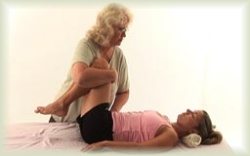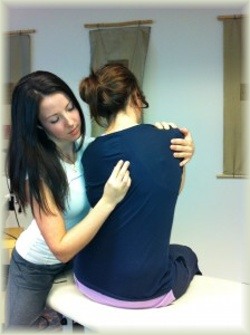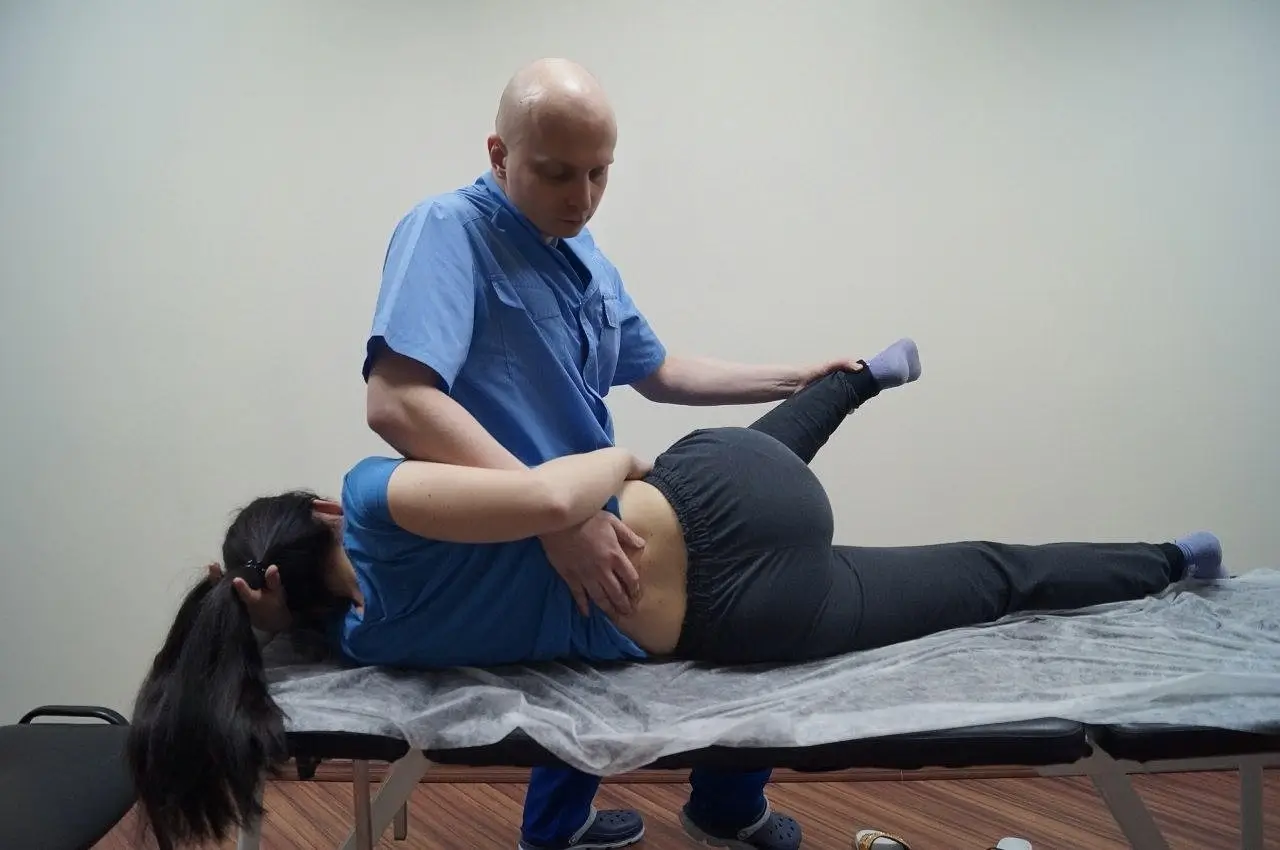

Facilitated Positional Release Technique
POSITIONAL RELEASE
Facilitated positional release is a method that uses a modification of the indirect myofascial release technique that is enhanced by positioning the region in a neutral position and adding assistance that facilitates compressive or torsional forces. The advantage of this technique is its ease of application and the speed at which a positive response appears. In addition, if the desired changes are not immediately apparent, it can be repeated many times or other treatments can be added.
 This treatment aims to normalize the hypertonic muscles, both superficial and deep. It is likely that most of the limitations in vertebral motor segment mobility, defined as somatic dysfunction, are caused and maintained by hypertonicity of the small, deep, intervertebral muscles. These tense muscles respond well to Facilitated Positional Release, thus immediately restoring normal joint function.
This treatment aims to normalize the hypertonic muscles, both superficial and deep. It is likely that most of the limitations in vertebral motor segment mobility, defined as somatic dysfunction, are caused and maintained by hypertonicity of the small, deep, intervertebral muscles. These tense muscles respond well to Facilitated Positional Release, thus immediately restoring normal joint function.
A plausible explanation for the effectiveness of this treatment is the effect on the muscle spindles of the gamma loop when irritation is suddenly reduced. According to Carew, when the load is suddenly reduced, the muscle relaxes and the intrafusal 1a fibers no longer excite the motor neurons that control the extrafusal muscle fibers. The muscle then begins to relax until it reaches its normal length. These physiological changes may explain the immediate effect that is felt when applying positional release with a facilitating force.
The positional release technique consists of three steps:
- 1. The doctor changes the position of the treated region in three planes. The large muscles are shortened or the joint somatic dysfunction is placed in a position of freedom (from the barrier).
- 2. A facilitating force (compression) is applied, which is why the method is sometimes called facilitating.
- 3. We keep in this position till the feeling of release, relaxation, tissues release. It may take different amount of time, a good guide for beginners may be 90 seconds.
 Positional release techniques use palpatory information gathered in a segment that moves passively in three planes. The basis of the methodology is the use of one hand placed on the segment, this is the palpatory or "listening" hand. The other hand is used for passive positioning of the patient. This is the "moving" hand. The palpatory hand evaluates the movements that are created, diagnosing any mobility limitations. The "moving" arm positions the patient's body, toward freedom, ease of movement in the affected segment. The patient may be asked to slowly inhale and exhale. When the palpatory hand feels the release and relaxation of the restriction, the patient's positioning may change to allow increased segmental movement in the direction of ease. This is repeated until the volume of movement is fully restored.
Positional release techniques use palpatory information gathered in a segment that moves passively in three planes. The basis of the methodology is the use of one hand placed on the segment, this is the palpatory or "listening" hand. The other hand is used for passive positioning of the patient. This is the "moving" hand. The palpatory hand evaluates the movements that are created, diagnosing any mobility limitations. The "moving" arm positions the patient's body, toward freedom, ease of movement in the affected segment. The patient may be asked to slowly inhale and exhale. When the palpatory hand feels the release and relaxation of the restriction, the patient's positioning may change to allow increased segmental movement in the direction of ease. This is repeated until the volume of movement is fully restored.
As you may have noticed, the method is similar to strain-counterstrain. What is the main difference? The main difference is that in the second one, we don't look for a position for positional relaxation in the three-dimensional direction of ease, but for the reduction of palpation soreness at specific points on the body associated with the dysfunction. Both methods are good, the safest in osteopathy, and adapt well to remote online consultations.
☛ Craniosacral treatment - indications.
☛ Benefits of muscle-energy techniques.




